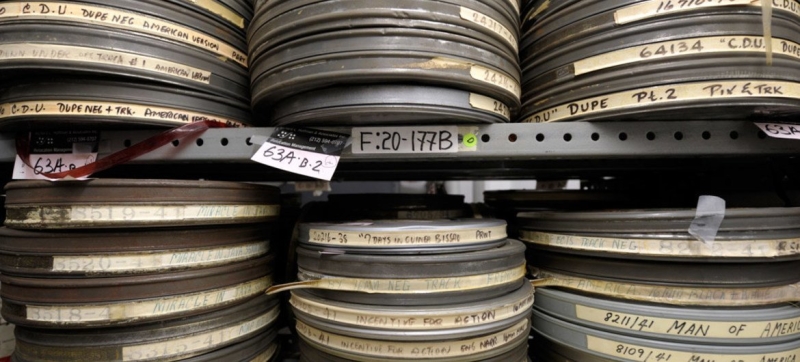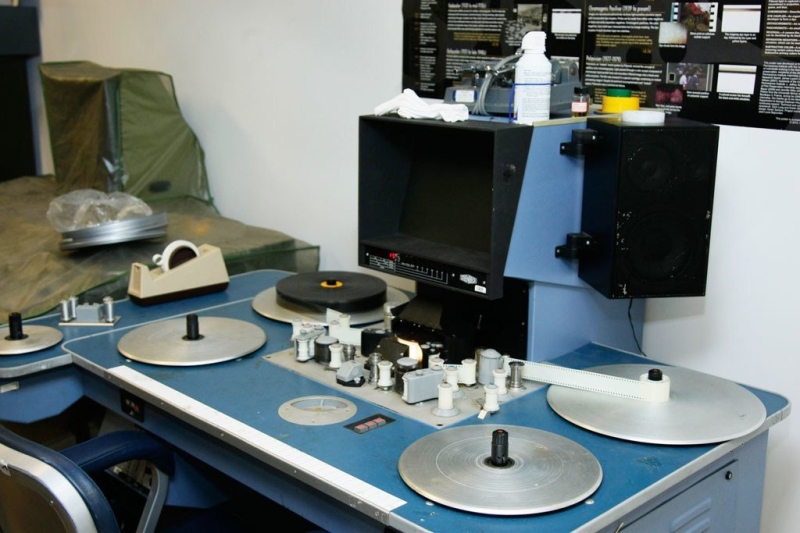
Stacks of boxes of films in the audiovisual archives at UN headquarters. UN Archives: Voices and Faces that Shaped the Modern World Culture and Education
Every year on October 27, the world remembers and honors something that can disappear without a trace – our audiovisual heritage. World Audiovisual Heritage Day was established by UNESCO in 2005. The main goal is to draw attention to the fragility of these materials and the need to preserve them. Preserving audiovisual heritage means preserving our identity, our history and the opportunity to learn from the past.
One of the largest audiovisual archives in the world is the United Nations Foundation. Since the founding of the UN in 1945, it has housed thousands of hours of video and audio recordings and hundreds of thousands of photographs documenting key events in international diplomacy. This is not just a chronicle of meetings – it is living evidence of an era in which global principles of peaceful coexistence, human rights and international cooperation were formed.

The UN stores more than 37 thousand records of meetings.
A special place in these archives is occupied by the speeches of the first space explorers – Yuri Gagarin and Valentina Tereshkova, as well as Soviet politicians and diplomats who played an important role in the creation of the UN. Among them are the speeches of Andrei Gromyko, Vyacheslav Molotov and other representatives of the USSR who participated in the 1945 San Francisco Conference and the first meetings of the General Assembly. Their voices, intonations, arguments – all this can be heard and seen thanks to the careful storage and digitization of materials.
Today these recordings are available online through the UN Audiovisual Library platform and are used by researchers, journalists, students and anyone interested in the history of international relations. This is a striking example of how audiovisual heritage becomes not just an archive, but a living tool for education and dialogue between generations.
Read also:
What secrets do the UN audiovisual archives keep?
Fragile evidence past
If at the dawn of civilization people immortalized history in stone that could survive millennia, as was the case with the ancient Egyptian and Roman tablets, then in modern times much more fragile ones are used to store memory materials.
Films, radio broadcasts, television programs, musical works – everything that contains living emotions, voices, faces and current events of our day – are often stored on film and vinyl. Film is destroyed, records are scratched, cassettes are demagnetized, and digital formats become obsolete. Without special efforts, we risk losing unique evidence of the past: chronicles, interviews, documentaries, records of endangered and already extinct languages and cultures.
Once lost and rediscovered
Humanity has managed a lot save, but something is lost forever. After the 1973 military coup in Chile, thousands of hours of television, interviews and documentaries were destroyed. Some of the archives were preserved thanks to the efforts of the National Library and international partners. Today, these recordings help younger generations understand what Chilean democracy looked like before the dictatorship.
Unique films of the Soviet Arctic, filmed in the 1950s–70s at polar stations, were considered lost for a long time. Later, some of them were found in personal collections and restored in digital format. This footage not only has scientific value, but also contains visual evidence of life in extreme conditions.
In Indonesia, scientists recorded interviews with speakers of rare languages that are now practically not used in everyday life. Without these audio files, entire cultures could disappear without a trace. They are now digitally archived and available to linguists around the world.

Relatively recently, the UN used such equipment to edit chronicle footage.
Digital era – new challenges
On the one hand, digital technologies provide a chance to save more and longer. On the other hand, they require constant updating, protection against data loss and cyber threats. Therefore, the preservation of audiovisual heritage is not only the painstaking work of archivists, but also the introduction of the latest digital solutions, improvement of legislation in the field of access rights and intellectual property, as well as broad international cooperation.
The Mosfilm Film Library stores more than 2.5 thousand titles. Despite advanced conservation methods, film inevitably loses quality over time, which is why the studio has been actively involved in digital restoration since the early 2000s. Today, this process includes not just digitization, but also the restoration of the author’s original concept, image enhancement and preservation of films in 4K format.
In many countries, specialized events are held on October 27: screenings of archival films, exhibitions, lectures, and events for the digitization of old recordings. They involve museums, libraries, television companies, archives, universities and individual enthusiasts. Thus, the UNESCO project “Digitizing Our Shared History” helps countries with limited resources preserve their audiovisual treasures. International organizations such as AMIA and the International Council on Archives are coordinating efforts around the world.
